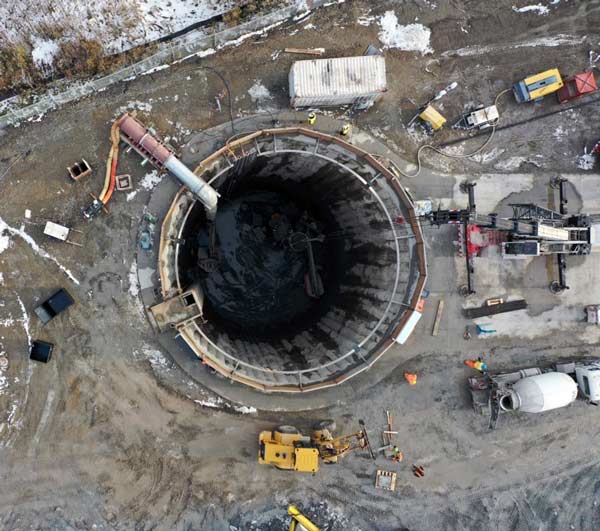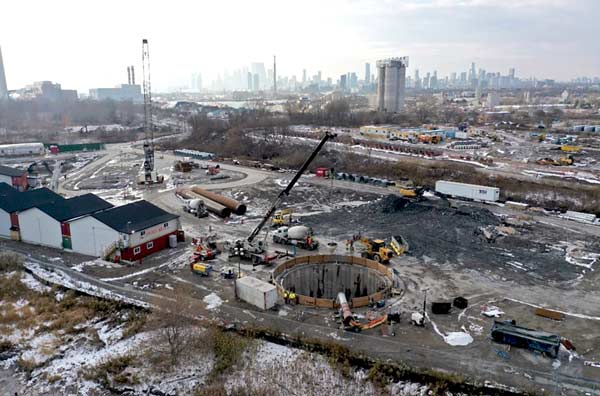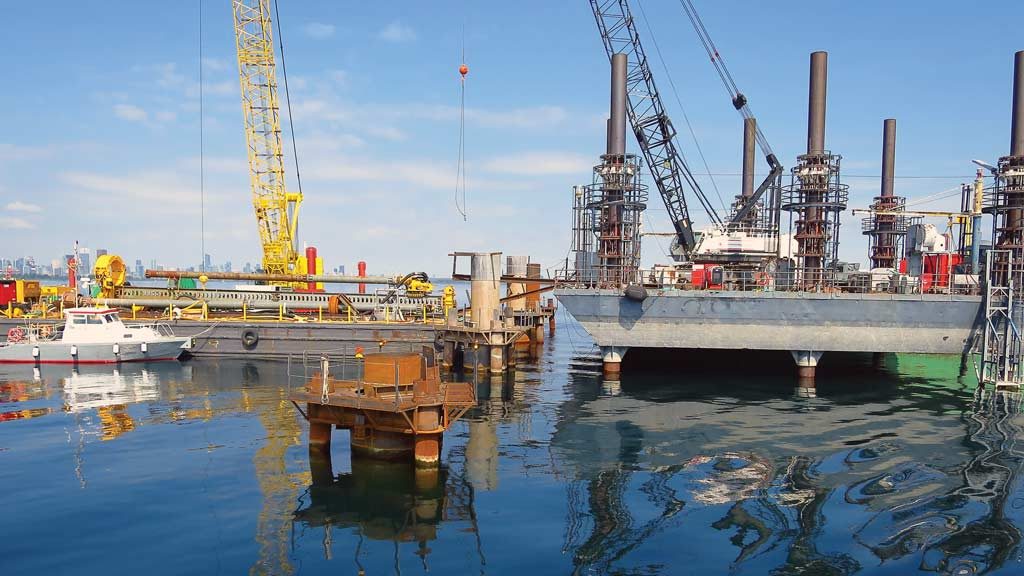Scheduled to commence this fall, the tunnel boring of a seven-metre-diameter, 3.5-kilometre-long outfall underneath Lake Ontario from the Ashbridges Bay Treatment Plant in east-end Toronto may or may not be largest or longest of its kind in Canada.
“But it will certainly be a major undertaking,” says Frank Quarisa, director of wastewater treatment with Toronto Water.
Excavation will begin once a shielded rock tunnel boring machine, currently being manufactured in Mexico, arrives on site and it won’t be until 2024 that construction is completed.
It is being built to improve capacity and better convey the effluent from the plant and will replace the existing at-capacity outfall which has been in service since 1947, he says.
The tunnelling contractor is Southland Mole of Canada/Astaldi Canada Joint Venture and the consulting engineering team is comprised of lead consultant Hatch and Jacobs (formerly CH2M) and Baird.

“All firms have a strong local presence and have thorough knowledge of the city’s wastewater infrastructure.”
Capable of installing and grouting a precast concrete segmental tunnel lining system, the TBM will be operated in two shifts (up to 10 hours each), although the work could be extended to 24-hours-a-day if situations warrant it, says Quarisa.
Some of the challenges which will be encountered along the route will include poor rock conditions such as weathered/cracked shale, hard rock layers and high-water infiltration, or gas pockets.
Although mammoth in scale, the tunnelling is only one component of the overall project which is comprised of a significant amount of both onshore and offshore work. Construction of an 85-metre-deep, 14-metre-diameter shaft — for lowering the TBM — began in January 2019 and is now at the 75-per-cent completed stage, he says.
In 2022 construction of four concrete conduits will also get underway. Intended to direct effluent from the plant to the shaft, they will include two four-metre-high by four-metre-wide secondary conduits and two bypass units measuring seven metres wide by four metres high.
Last summer the phased barge installation of 50 in-lake risers by Southland Mole of Canada/Johnson Bros Corporation, the Joint Venture marine contractor, also got underway. The risers are vertical stainless-steel pipes along the last kilometre of the tunnel which will diffuse the treated effluent in a wide direction.
In describing the complexities of this phase of the project, Quarisa points out that once drilling through lakebed and rock is complete, the riser pipes are lowered and grouted in place.
As the tunnelling work advances, the tunnel-riser connection work will be performed from the tunnel. However, all the risers have to be installed and pressure tested before the TBM mining advances to within 100 metres of any riser, he says.

Only four risers were able to be placed last year, so the remainder will be installed between April and December of this year and the rest in 2021, says Quarisa.
Another notable challenge will be the integration of a new state-of-the-art UV disinfection facility which will replace the plant’s chlorine treatment process.
Under construction since April 2018 by Graham Construction (and designed by AECOM), the facility is expected to be completed in 2022 — two years before the new outfall is completed. As a result, through a series of plant conduits re-configuration and tie-ins, the disinfected effluent will have to be directed to the current plant outfall. The flow will then have to be re-directed to the new outfall once it’s operational.
And when that milestone occurs the 1947 structure will become redundant and a decision on a formal decommissioning will be made, he says.
The catalyst for the project includes the inadequacies of the old outfall, the incorporation of the UV facility, and the ambitious objectives of Toronto’s the Don River and Central Waterfront Flow System, he says.
Described by the city as “the largest and most significant water quality improvement undertaking” the system is comprised of five interrelated projects intended to improve water quality in large part of east central Toronto and in the lake by eliminating the release of combined sewer and stormwater run-off into waterways through the use of tunnels and storage chambers.
There are still a number of combined sewers which carry both stormwater runoff and sewage in that part of the city, say Toronto Water’s general manager, Lou Di Gironimo
The first of those projects is the now-under construction 10.5-kilometre-long, 6.3-metre diameter Coxwell Bypass Tunnel. Launched from the Ashbridges plant, the tunnel is expected to be completed in 2023, says Di Gironimo.











Recent Comments